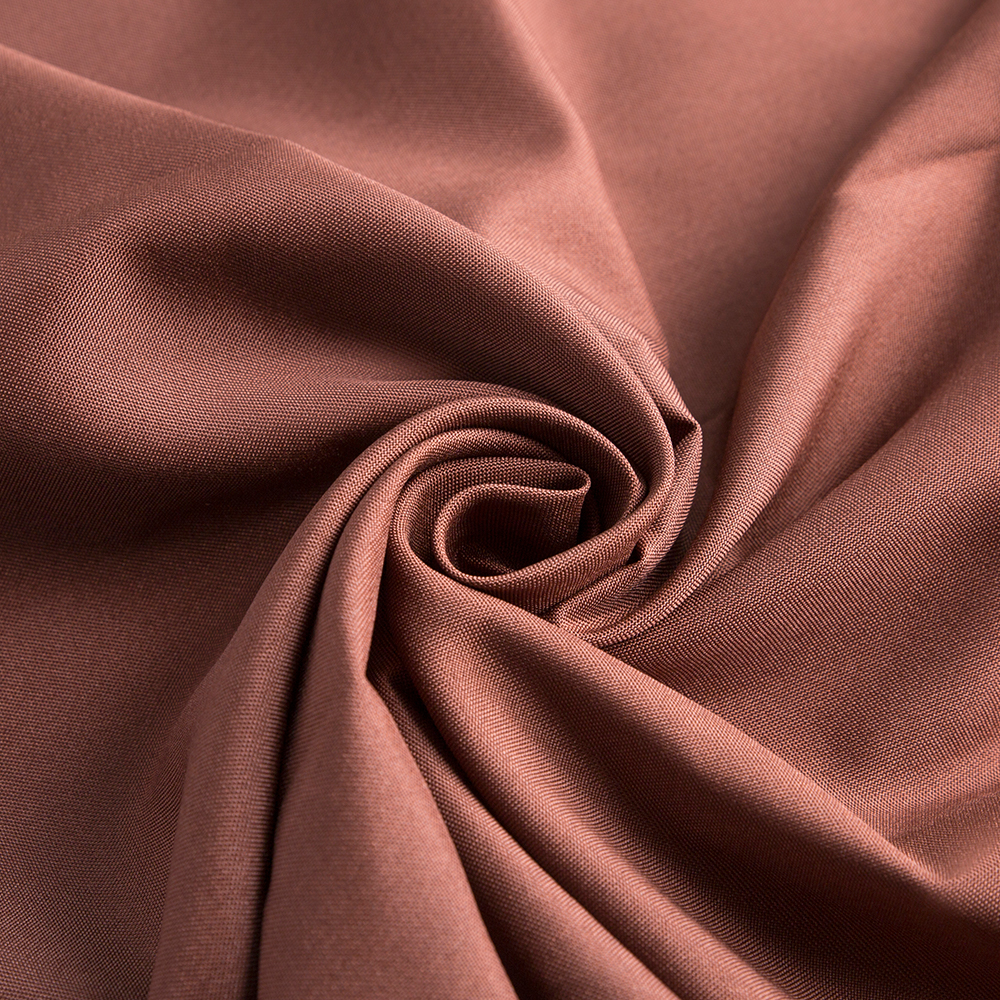Polyester dyed plain weave fabric performs well in various environmental conditions due to its synthetic nature and specific structural properties. Here's a detailed look at how it performs under different environmental conditions:
UV Resistance: Polyester has good UV resistance compared to natural fibers like cotton or silk. It does not degrade quickly when exposed to sunlight, making it suitable for outdoor applications such as awnings, outdoor apparel, and flags.Color Fastness: Polyester dyed plain weave fabrics generally exhibit excellent color fastness to sunlight, meaning that the colors remain vibrant for longer periods when exposed to UV rays. The use of high-quality dyes and UV stabilizers during the dyeing process can further enhance this resistance.
Moisture Resistance: Polyester is hydrophobic, meaning it resists water absorption. This property makes it quick-drying, resistant to mold and mildew, and less prone to water-related damage than natural fibers. It performs well in humid environments, maintaining its shape and structural integrity.Breathability: While polyester resists moisture, its breathability is moderate compared to natural fibers. In hot and humid climates, polyester plain weave fabrics may feel less breathable and trap heat, unless engineered with special finishes or blended with more breathable fibers.
Heat Resistance: Polyester has moderate heat resistance. It can withstand temperatures up to about 150-160°C (302-320°F) before it begins to deform or melt. However, in high-heat environments (e.g., near flames or high-temperature processes), polyester may not perform as well as heat-resistant fibers like aramid.Cold Resistance: Polyester maintains its flexibility and durability even in cold temperatures. It does not become brittle, making it suitable for use in colder climates or winter apparel.

Abrasion Resistance: Polyester dyed plain weave fabrics offer good abrasion resistance due to the inherent strength of polyester fibers. This makes them suitable for high-wear applications like upholstery, bags, and sportswear that may be exposed to rough surfaces or frequent friction.Pilling Resistance: While polyester is generally resistant to wear, plain weave structures can sometimes lead to pilling when subjected to heavy friction, especially if the fabric is low in quality or poorly finished. Anti-pilling treatments can help improve resistance.
Resistance to Chemicals: Polyester has excellent resistance to a wide range of chemicals, including acids, alkalis, and solvents. This makes polyester dyed plain weave fabric a popular choice in industrial settings or environments where chemical exposure is a concern.Impact of Cleaning Agents: Polyester can withstand most common household cleaning agents without significant degradation. However, repeated exposure to harsh chemicals, such as bleach, may weaken the fabric over time or affect color.
Mold and Mildew: Due to its low moisture absorption, polyester dyed plain weave fabric is highly resistant to mold, mildew, and bacterial growth. This makes it suitable for humid environments or applications requiring frequent exposure to moisture.Insects and Microbes: Polyester is resistant to insect damage (e.g., moths) and does not attract microbes, unlike natural fibers. This property adds to its durability in various environmental conditions.
Wind Resistance: Polyester dyed plain weave fabrics can offer good wind resistance, especially when woven tightly. This makes them suitable for applications like windbreakers, tents, or protective covers.
Air Permeability: Depending on the weave density and fabric thickness, air permeability may vary. Tightly woven polyester plain weave fabrics may have lower air permeability, while those with a more open weave may be more breathable.
Polyester dyed plain weave fabric performs well across a range of environmental conditions due to its inherent properties, such as durability, UV resistance, chemical resistance, and moisture resistance.However, its breathability, heat resistance, and flame resistance can be less optimal depending on the specific application and environmental demands. Modifications, such as fabric treatments or blending with other fibers, can help enhance its performance in specific conditions.





 English
English
 中文简体
中文简体










